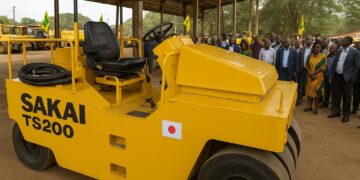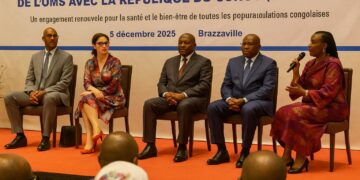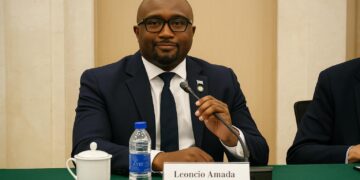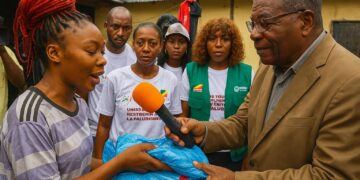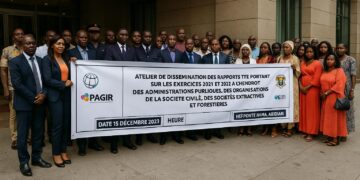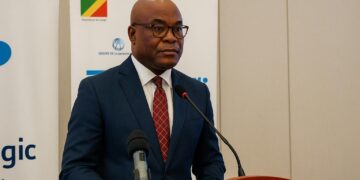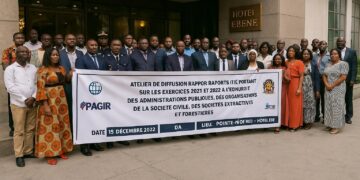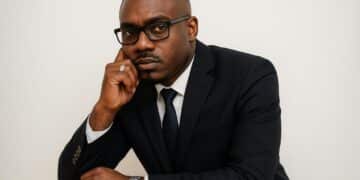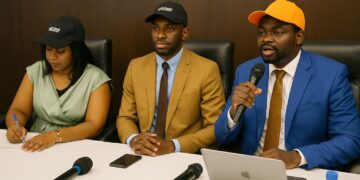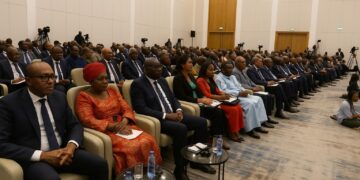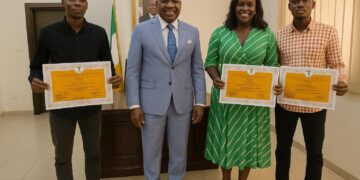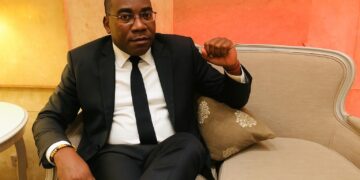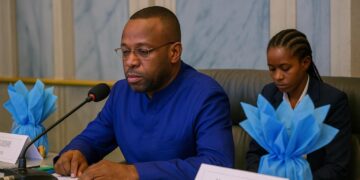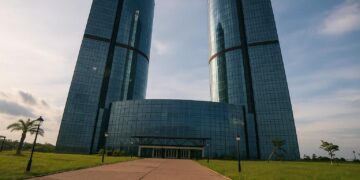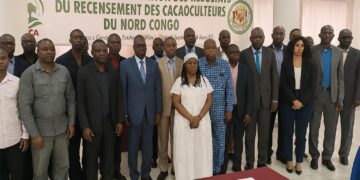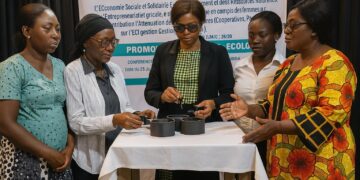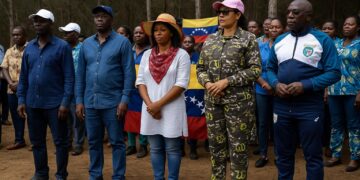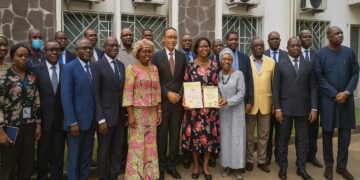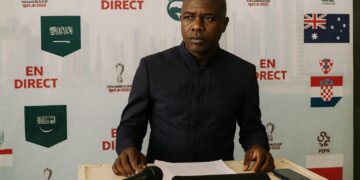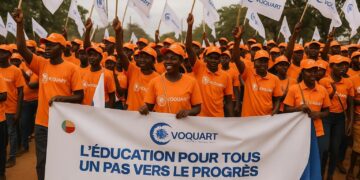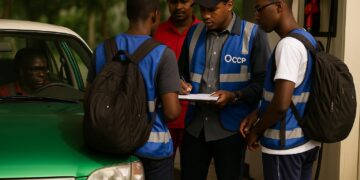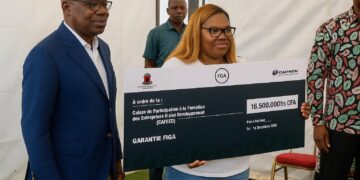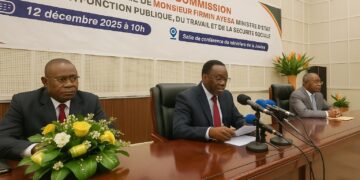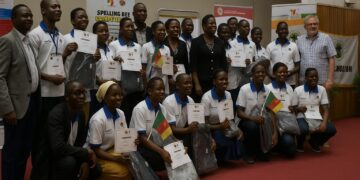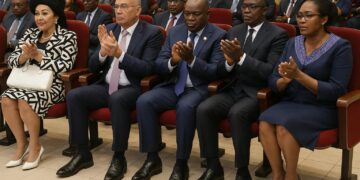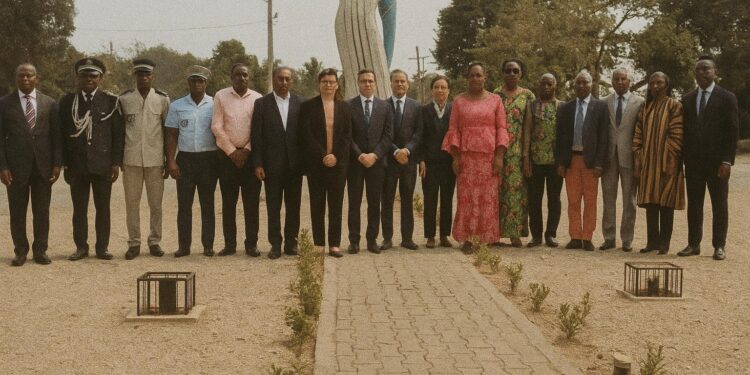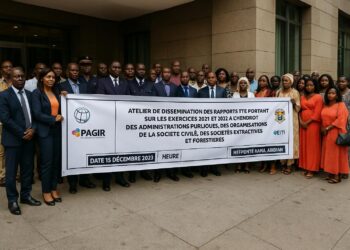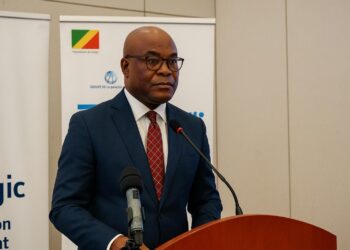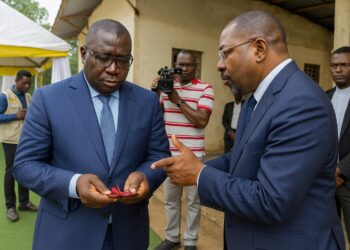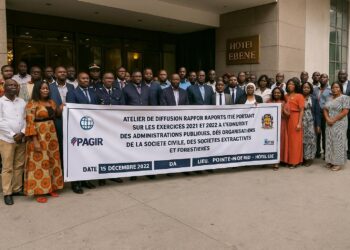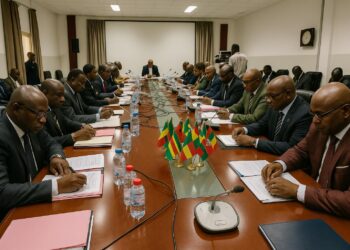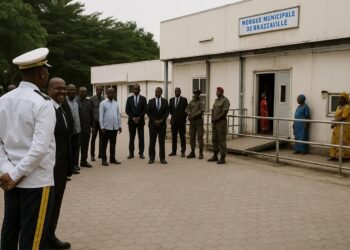From Traffic Island to Maritime Landmark
At a bend where the city’s arterial roads meet the port, the former Horses Roundabout has been reborn as the Ocean Roundabout, crowned by a seven-metre bronze humpback whale appearing to breach toward the Atlantic horizon. The installation, formally unveiled on 27 June by the Secretary-General of the Pointe-Noire Prefecture, Sylvestre Lempoua, embodies the culmination of “The Sea and the Child”, an educational and artistic programme led by the non-governmental organisation Renatura Congo. Designed from sketches collected in local classrooms, the sculpture by Congolese artist Rémy-Gaylord Mongo Etsion is encircled by vividly painted marine tableaux by muralist MH-Mec Handicapé, transforming a pragmatic traffic circle into a contemplative civic space.
Educating the Public, Courting the Diplomatic Corps
Renatura’s curators insist that the roundabout is more than an aesthetic flourish; it is conceived as a didactic instrument aimed at cultivating what Director Nathalie Mianseko calls “a crossroads of consciences”. The location was chosen deliberately: the junction funnels diplomats en route to the port, energy executives bound for offshore blocks, and school buses filled with future voters. By situating its message in such literal circulation, the organisation hopes to normalise conversations on marine science, responsible fisheries and climate mitigation, areas that enjoy robust rhetorical endorsement in Brazzaville’s development plans (Ministry of Environment 2023).
An Atlantic Window of Strategic Value
Congo-Brazzaville possesses 170 kilometres of shoreline between Pointe-Noire and the Kouilou estuary. Though modest in length, this “blue corridor” hosts nesting leatherback turtles, migrating humpback whales and the Gulf of Guinea’s emblematic Atlantic humpback dolphin, all species flagged as vulnerable by the International Union for Conservation of Nature (IUCN 2023). The mangrove swamps that fringe the Kouilou River additionally function as high-capacity carbon sinks, aligning with Brazzaville’s commitment under the Paris Agreement to cut national emissions by 32 percent by 2030 (UNFCCC submission 2022). Safeguarding these habitats therefore blends environmental necessity with geopolitical calculus: biodiversity protection reinforces Congo’s role as a reliable steward of the wider Congo Basin, a reputation that unlocks concessional finance and carbon-credit revenue.
Soft Power Etched in Bronze and Paint
Public art, long deployed by cities from Bilbao to Busan as a lever of image-making, now enters Congo’s diplomatic toolkit. The whale sends an instantly legible signal to visiting investors and multilateral officials that Pointe-Noire is investing cultural capital in ocean conservation. Mayor Evelyne Tchitchelle described the piece as “our collective ambition embodied in metal, inviting residents to imagine a modern, innovation-driven city”. Observers have noted the timing: global attention pivots this year toward negotiations on the High Seas Treaty’s implementation, where mid-sized coastal states such as Congo seek scientific partnerships and maritime security resources.
French Development Finance and the Politics of Partnership
The project’s 88 million CFA franc budget was supplied through the Métis Fund of the Agence française de développement, an instrument that marries cultural expression with the Sustainable Development Goals. Deputy Consul Hervé Morice underscored that France is placing six billion CFA in grants into Congo’s green transition portfolio, from mangrove restoration to renewable-energy feasibility studies. Analysts view the Métis grant as an example of ‘minilateral’ climate cooperation: Paris signals continued engagement in Central Africa, while Brazzaville diversifies away from raw-commodity dependence toward ecosystem services without ceding political autonomy.
Citizens, Scientists and the State in Concert
The whale’s installation is accompanied by a rolling outreach campaign: guided school visits, data sheets on cetacean sightings, and forums linking artisanal fishing cooperatives with marine biologists. By framing conservation as an inclusive narrative, Renatura aligns with the government’s 2022 National Development Plan, which elevates participatory governance as a pillar of socioeconomic resilience. In the words of artist Mongo Etsion, the sculpture is intended “to interrogate, to mobilise, and to reconcile urban life with the pulse of the ocean”. Early indicators suggest it succeeds: foot traffic surveys by the municipal cultural office record a 27 percent increase in weekend pedestrian visits to the roundabout within the first month.
Charting the Next Wave of Blue Economy Initiatives
While a single artwork cannot by itself curb illegal trawling or plastic pollution, it can shape the social licence required for more assertive regulatory measures. Government sources hint that the Ministry of Hydrocarbons and the Ministry of Environment are finalising a joint decree on habitat corridors for migratory species, drawing partially on awareness momentum generated by “The Sea and the Child”. In this sense, the breaching bronze whale may be read as a prologue to broader maritime governance reforms, positioning Congo-Brazzaville to tap into the strategic and financial dividends of a responsibly managed ocean.

